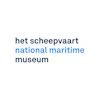
02. Noord 0: Republic at Sea
The exhibition Republic at Sea highlights the historic link between the Netherlands and the sea. It showcases fifty objects, including some of the most prized items from the museum’s collection, from the seventeenth and eighteenth century, when the Netherlands was a republic. During the sixteenth and seventeenth centuries, Dutch cities prospered. Amsterdam expanded to become a port city with connections throughout the world. While the nobility and the church held sway elsewhere in Europe, in the Low Countries merchants were pulling the strings. Their trade networks reached every corner of the globe and led to rising prosperity levels. From shipwrights to brewers, almost everyone here worked directly or indirectly for the shipping industry. That applied to the admiralties too, whose warships had to protect merchant vessels on their trade routes. But the Dutch Golden Age, as it is known, was not purely a success story. Such a high level of prosperity also had its downsides. The impressive growth in the Dutch Republic was achieved at the expense of others: wars, colonial domination and slavery produced many victims throughout the world.


The National Maritime Museum
Het Scheepvaartmuseum (The National Maritime Museum) shows the strong connection between the maritime world and society as a whole, and more specifically the impact of this on the lives of many individuals. The collection of The National Maritime Museum is one of the largest and most notable maritime collections in the world with approximately 400,000 objects, including paintings, models of ships, navigation instruments, and maps of the world. Discover 500 years of Dutch Maritime history as well as its strong links to today’s society and the society of the future.
- Kattenburgerplein 1
- Amsterdam Netherlands
- (020) 52 32 222
- www.hetscheepvaartmuseum.nl
